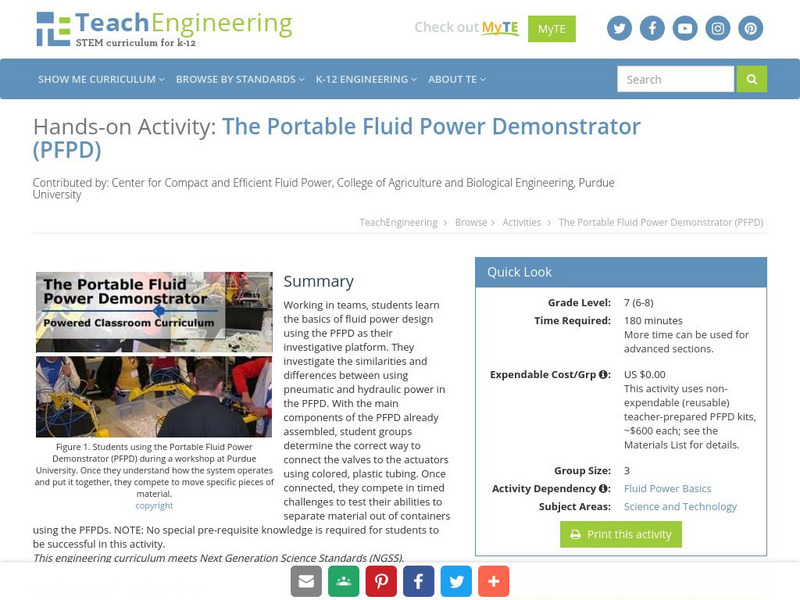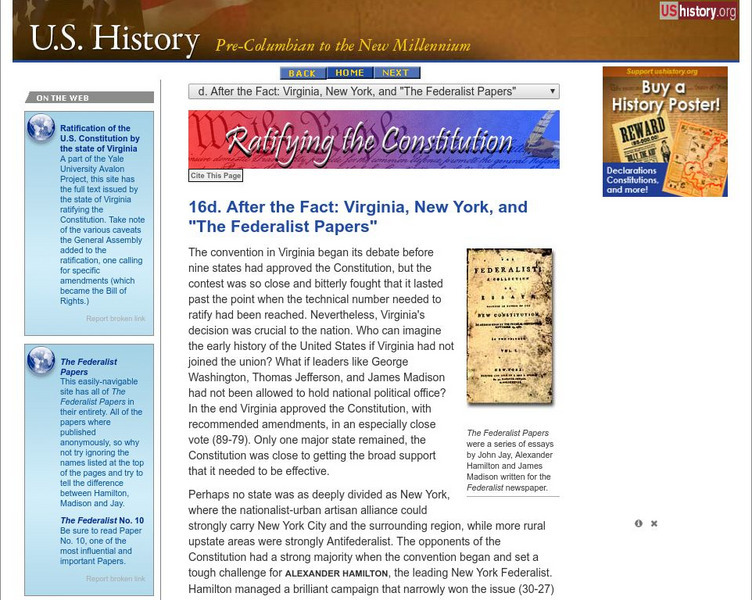Curated OER
Paper, Microorganisms, and Biocides
Students study the paper making process and discuss the implications of recycling paper. Students conduct a lab to determine if microorganisms are present in different solutions used in the papermaking process today.
Curated OER
Coal and the Environment
Students read about how burning coal affects the environment. After students finish reading about how burning coal affects the environment they have a group discussion to discuss what they thought about the information.
Curated OER
Mechanics Help Using the Comma with Formal Letters
In this worksheet, students analyze different parts of a letter and insert the appropriate punctuation including a comma, period, colon, question mark and semicolon.
Curated OER
The Vocabulary of Space
Students build their knowledge and understanding of vocabulary related to space. In this space instructional activity, students discuss four categories of words and phrases related to space.
American Bar Association
American Bar Assoc.: Separation of Powers, Connecting the Separate Powers [Pdf]
This instructional activity involves role-playing to help the students understand the separation of powers. [PDF]
TED Talks
Ted: Ted Ed: How Is Power Divided in the United States Government?
Video accompanied by questions for students that looks at how the concept of separation of powers embedded in the Constitution is applied in the United States government. [3:50]
ClassFlow
Class Flow: Constitution
[Free Registration/Login Required] This flipchart is an in depth Activote questionnaire relating to our Constitution. Students should understand the basic concepts of the Constitution, checks and balances, separation of powers, and...
PBS
Pbs Learning Media: The Powers of Government
Students learn how the three branches of the United States government work together and the powers that the Constitution assigns to each branch-legislative, executive, and judicial.
TeachEngineering
Teach Engineering: The Portable Fluid Power Demonstrator (Pfpd)
Working as teams, students learn the basics of fluid power design using the PFPD as their investigative platform. Students will investigate the similarities and differences between using pneumatic and hydraulic power in the PFPD. While...
Energy4Me
Energy4me: Tower of Power
Students will learn that heat is needed to separate crude oil/petroleum into useable substances to make the products we use every day.
Harry S. Truman Library and Museum
Harry S. Truman Library & Museum: Three Branches of Government
Interactive teaching unit for Grades 5-8 that helps to explain the three branches of government and the the balance of power. Topics covered include balance of government, how a bill becomes a law, the amendment process, the Legislative...
Harry S. Truman Library and Museum
Harry S. Truman Library & Museum: Checks and Balances
Descriptions of the separate powers and functions of the three branches of the federal government. Site explains how the powers of one branch check and balance those of another.
US Government Publishing Office
Ben's Guide to u.s. Government: Branches of Government
Students will visualize how the Constitution organized our 3 branches of government and the role each plays in our government. This infographic breaks down the powers of each branch and shows how they perform checks on the other...
US National Archives
National Archives: The Constitution in Action: Article Ii
This activity can be used during a unit on the U.S. Constitution. Students will analyze the Senate Journal of the First Congress and identify how the document demonstrates content contained within Article II of the Constitution in...
Independence Hall Association
U.s. History: Malcolm X Amd the Nation of Islam
A brief biography of a leader for black power, Malcolm X. Read about his early life and conversion to the Nation of Islam. Find out what his goals were for blacks in America, and see how the means to the end was different from Martin...
Independence Hall Association
U.s. History: The Antifederalists' Victory in Defeat
By 1788 eleven states ratified the Constitution, more than enough to put it into effect as the document establishing rules for the nation. Read about the goals of the Federalists in estabilishing a national government and find out how...
Independence Hall Association
U.s. History: After the Fact: Virginia, New Yok, and "The Federalist Papers"
Read about the necessity for Virginia and New York to support the ratification of the Constitution. See what influenced the vote in Virginia and how the legislature of New York was finally convinced.
iCivics
I Civics: Montesquieu Mini Lesson
Meet the Baron de Montesquieu, one of the great thinkers of the 18th century. He spent a lot of time thinking about how governments should be created and maintained. These ideas guided the Founding Fathers when they wrote the...
Other
Plimouth Plantation: Thanksgiving Interactive: You Are the Historian
This site, developed by Plimoth Plantation, offers visitors the chance to use the skills of historians to peel away the layers of myth and misconception surrounding "The First Thanksgiving" and discover what might really have happened...
Other popular searches
- Separation of Powers Game
- Civics Separation of Powers
- The Separation of Powers
- 6th Grade Separation of Powers






![American Bar Assoc.: Separation of Powers, Connecting the Separate Powers [Pdf] Lesson Plan American Bar Assoc.: Separation of Powers, Connecting the Separate Powers [Pdf] Lesson Plan](https://d15y2dacu3jp90.cloudfront.net/images/attachment_defaults/resource/large/FPO-knovation.png)






